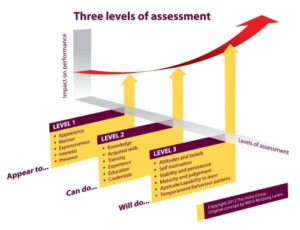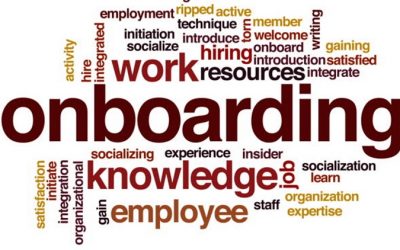Dealing with a poor executive performance can be frustrating. It can be complex and time consuming to make sure you get the right result – an improvement in their performance, or failing that, them being managed out of the organisation in a fair and legal way.It is likely you will meet with a poor executive performance from senior management at least twice; the first time to tell them how their performance is ineffective and set targets for improvement, and the second to review their progress and decide about their future.
In practice, you may have several other steps to follow, but the conversations will follow the same pattern, and if you master that pattern, you will find it easier to deal with any conversation about performance effectively. And what is the pattern? You prepare. You talk. You listen. You consider. You decide. You communicate your decision. In basic terms, it is as simple as that.
Prepare
Preparation involves making sure you know the Board of Directors policy and what authority they or you must make decisions; you know where the poor executive performance falls short (and you have specific examples), you’ve planned how you want the meeting to go, you’ve given the executive appropriate notice and information in accordance with policy, and you’ve identified a suitable time and venue.
Talk
Next, you talk. You may have a predetermined structure to follow or perhaps an agenda you have drawn up, in either case, you need to explain the reason for the meeting and what you want to achieve – to discuss the performance issues and what needs to be done about them. Then you give them the evidence of their performance shortfalls.
Listen
Now you give the executive the opportunity to talk and you need to listen. The quickest way to make sure someone doesn’t engage with you is to make them think you’re ignoring what they say. And the only way you are going to get an improvement in performance is if they are working harder, better, or differently. You need their participation. That said, if they refuse to make the effort, then you can still act. It’s not about handing over control. It’s about managing the situation.
It may be that there are some issues that you’re not aware of. They may not have been properly mentored to carry out that objective or task. They may have to rely on a third party which is causing the problems. They may have a health problem that impacts on their ability. There can be as many reasons as there are staff.
They may also get emotional. You might face anger or distress. You can never tell how someone will react until you’re in that situation. Don’t let this side-track you. If they become too emotional to carry on, take a break, but always make sure you get back to the matter at hand. As a rule, having evidence of poor executive performance issues makes it easier to deal with any emotional reactions since it is harder to ignore facts. It also helps you deal with those who might use an emotional reaction as a tactic to delay the discussion.
Consider
This leads neatly on to considering the information you now have. No effective Board member makes a business decision without having the relevant facts or without weighing the options. Performance management is as much a business decision as any other issue you will face. Compensation is not the biggest budgetary outgoing, as in reality poor executive performance can cause a damaging ripple or delay in carrying out the business strategy or impact your market share or customer confidence and that can cost not only millions over the course of two or three years. Dealing with poor executive performance issues is a key opportunity to ensure you get the best return on that investment.
Decide What to do about Poor Executive Performance
Now you have the decision to make. You’ll know from your preparation which options are open to you: it may be a verbal or written warning, it may be dismissal. Whatever it is, ensuring that you have been fair and followed policy will mean your decision is more likely to stand if the executive decides to challenge it. It would be unfortunate to end up fighting a legal battle and losing, just for the sake of following the process properly.
Communicate
Once you have made your decision, you need to communicate it in the most appropriate way. Face-to-face is usually best, with written confirmation including an action plan. This should be given to him/her as quickly as possible to both capitalise on the momentum from your discussion and to reinforce its importance. There should also be clear demarcation between responsibilities, especially since the executive is the only one who can improve their performance.
And how do you know if you get it right? The executive goes away knowing what they should do, how they must do it, when they need to do it by, they have no illusions about the part they must play, they know the support they can expect from you the most senior management and the Board of Directors, and they understand the consequences of not meeting their targets.
And finally, it can be uncomfortable for any CXO or Board member having to have these discussions with one of their executives, but if you do it in a fair, reasonable, and supportive way, you can be their biggest ally, even if, in the end, it doesn’t work out.
How to Avoid Poor Executive Performance
Studies from Leadership IQ, SHRM, and many others have revealed repeatedly that the most failure by executives is lack of interpersonal skills. But really it goes much deeper than that. The executive may have outstanding KPIs and accomplishments throughout their career, but in this instance, seems to be failing. It is not always the individual’s fault as changes to the most senior executive staff or ownership of the company can also be a key reason for poor executive performance.
One of the first things we do at NextGen Global Executive Search is to use scientifically based psychometric surveys of the team an executive role will be working with. Depending on the level of the role, this could include Board members, CXOs, SVP, internal customers, and in the case of a vital role in sales or support, we include key external customers.
The resulting data is compiled from these 5 to 8 surveys into a Composite Team Analysis. It tells us the values and motivations, relational communications style, decision making and management traits of the team.This in turn gives our staff a good idea of the target candidate profile from a team fit perspective. The easy part, as any good retained executive search consultant will tell you, is finding a good role fit takes a lot of hard work and documented proof to insure you have the right shortlist.
 Even on difficult searches – I’ve had several of “finding the needled in the haystack” where there were a very limited number of individuals who could meet/exceed the role objectives, it’s still the easier part of a search.
Even on difficult searches – I’ve had several of “finding the needled in the haystack” where there were a very limited number of individuals who could meet/exceed the role objectives, it’s still the easier part of a search.
Before proceeding with cold calling and networking, we develop a Search Strategy that details what we are looking for in role fit, team fit, measurable past KPIS, relevance and depth of industry relationships, investor relationships, market cap, market share, turnaround where appropriate, etc. After all, the entire reason for retaining an executive search consultant is because you want the “A players” brought forth, the 14% of the entire workforce that produces 8 to 10 times more than B players.
With CXO and SVP roles, you cannot afford to miss. Same goes for key functional leaders, so that’s not limited to the most senior executives.Now let’s get back to how you can potentially avoid poor executive performance and IMPROVE it. If your retention rate starts to go down, market share or customer support is dropping, revenues are declining, or poor morale seems to be increasing, the worst thing you can do is panic or make staffing decisions based solely on those metrics.
Before doing so, entertain the low cost involved with scientifically based Team Alignment and Individual Team Performance. We’ve done this for several clients – big and small – and what we have found is that some individuals are simply on the wrong team or that the teams themselves were simply improperly aligned to succeed. It goes back to team fit. Each department in any organization has different teams and those teams are made up of individuals. Having too many similar strengths and weaknesses means a team cannot learn and produce effectively.
The counterbalance of any team is having an effective leader, a coach, a technical or sales mentor, an interpersonal skills expert, a geek, etc. – if properly aligned these seemingly different individuals have the right balance of identified strengths and weaknesses that those traits can be effective through action plans. In a very short time, realignment and proper positioning of teams can increase production dramatically. How many of you have ever used this method?
 Same goes for accepting verbatim without question those provided by the candidate as they are so often former colleagues who are great friends unwilling to look past a biased lense. After identifying a target list of potential candidates through my Rolodex, networking, and referrals, I conduct one to two pre-screening interviews with the objective of understanding the motivations, skills/experience, and accomplishments of those potential candidates. If I am satisfied, they move forward to deeper interviews on my candidate shortlist.
Same goes for accepting verbatim without question those provided by the candidate as they are so often former colleagues who are great friends unwilling to look past a biased lense. After identifying a target list of potential candidates through my Rolodex, networking, and referrals, I conduct one to two pre-screening interviews with the objective of understanding the motivations, skills/experience, and accomplishments of those potential candidates. If I am satisfied, they move forward to deeper interviews on my candidate shortlist.

 One needs to consider the team profile the candidate will be working within to then analyze if a candidate is a team fit. This means taking into consideration that team’s natural and adaptive communications styles, values and motivations, and decision making traits in order to identify a Team Profile.
One needs to consider the team profile the candidate will be working within to then analyze if a candidate is a team fit. This means taking into consideration that team’s natural and adaptive communications styles, values and motivations, and decision making traits in order to identify a Team Profile.
 Even on difficult searches – I’ve had several of “finding the needled in the haystack” where there were a very limited number of individuals who could meet/exceed the role objectives, it’s still the easier part of a search.
Even on difficult searches – I’ve had several of “finding the needled in the haystack” where there were a very limited number of individuals who could meet/exceed the role objectives, it’s still the easier part of a search.
